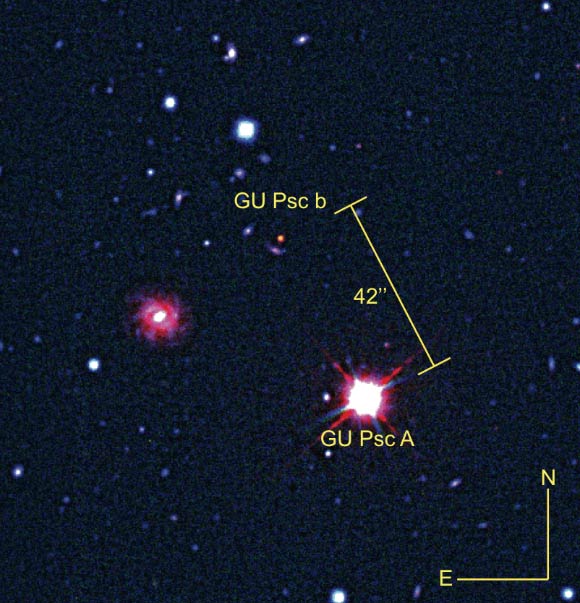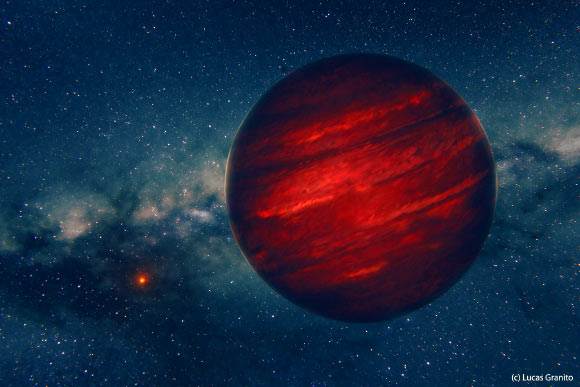A newly discovered extrasolar planet takes about 80,000 years to make a complete orbit around its star, GU Psc.

This composite image shows the exoplanet GU Psc b and its host star. Image credit: Marie-Eve Naud et al.
This exoplanet, named GU Psc b, has been discovered by a multinational group of astronomers, headed by Dr Marie-Eve Naud from the University of Montreal, via direct imaging method. It orbits its parent star, GU Psc, at a distance of about 2,000 AUs (1 AU = the Earth-Sun distance) – a record among exoplanets.
The star is about 3 times less massive than the Sun. It is located in the constellation Pisces, 155 light-years away from Earth.
Dr Naud and her colleagues were looking around GU Psc because the star had just been identified as a member of the young star group AB Doradus (young stars are prime targets for planetary detection through imaging because the planets around them are still cooling and are therefore brighter).
“We observed more than 90 stars and found only one planet, so this is truly an astronomical oddity!” said Dr Naud, who is the first author of the paper published in the Astrophysical Journal (arXiv.org version).
Observing a planet does not directly allow determining its mass. Instead, researchers use theoretical models of planetary evolution to determine its characteristics.
The light spectrum of GU Psc b obtained from the Gemini North Observatory in Hawaii was compared to such models to show that it has a temperature of around 800 degrees Celsius.
Knowing the age of GU Psc due to its location in AB Doradus, the astronomers were able to determine its mass, which is 9-13 times that of Jupiter.
In the coming years, the team hopes to detect planets that are similar to GU Psc but much closer to their stars.
The proximity of these planets to their stars will make them much more difficult to observe. GU Psc b is therefore a model for better understanding these objects.
______
Marie-Eve Naud et al. 2014. Discovery of a Wide Planetary-mass Companion to the Young M3 Star GU Psc. ApJ 787, 5; doi: 10.1088/0004-637X/787/1/5








